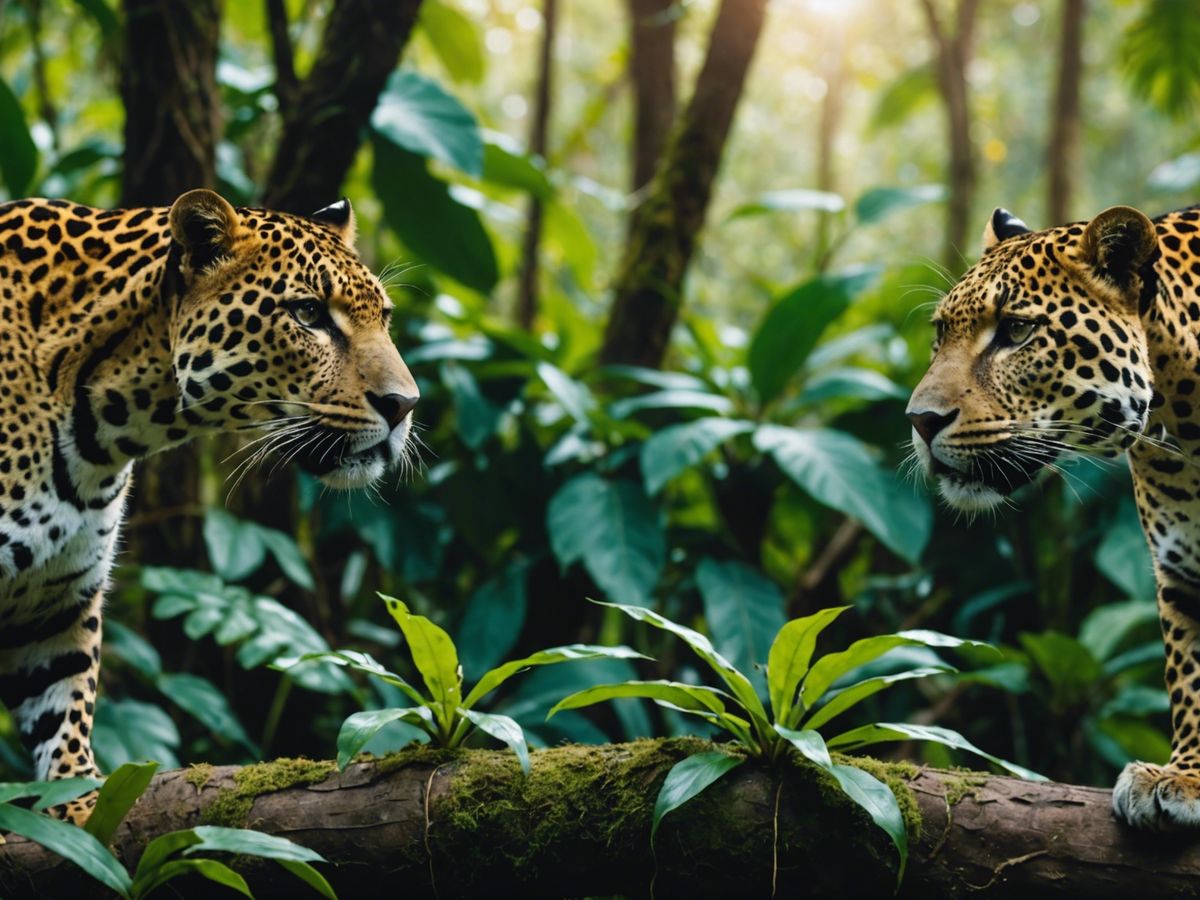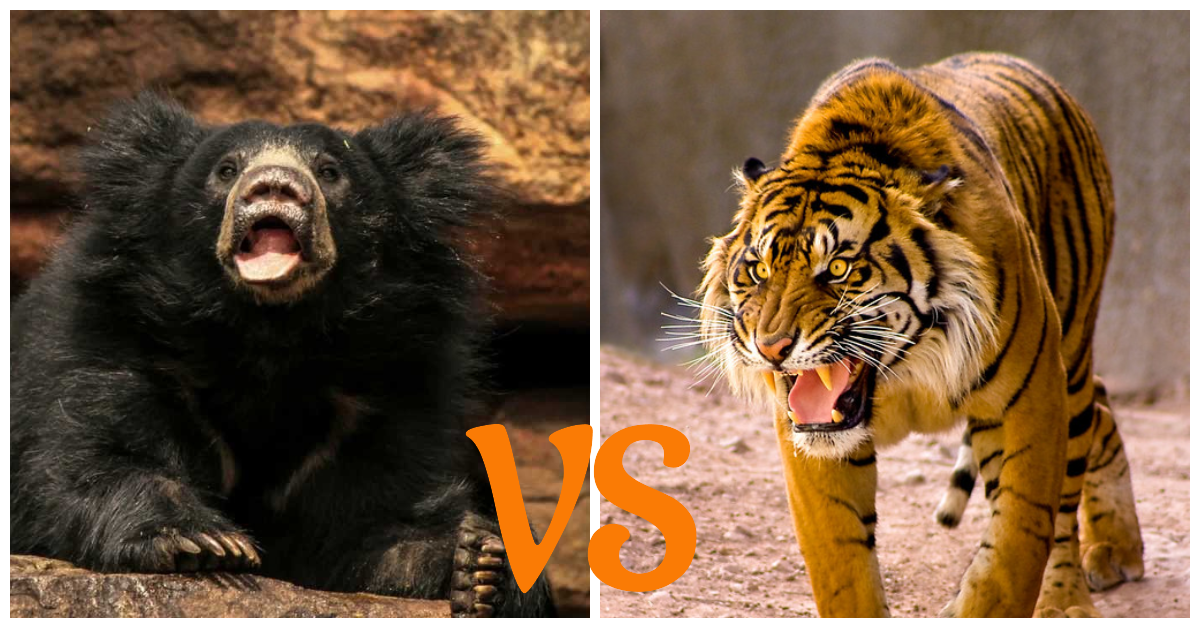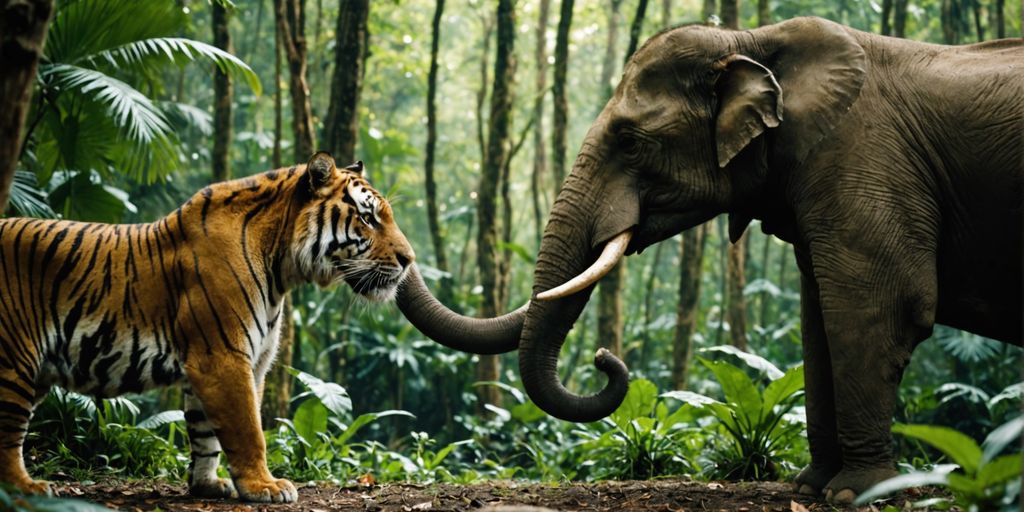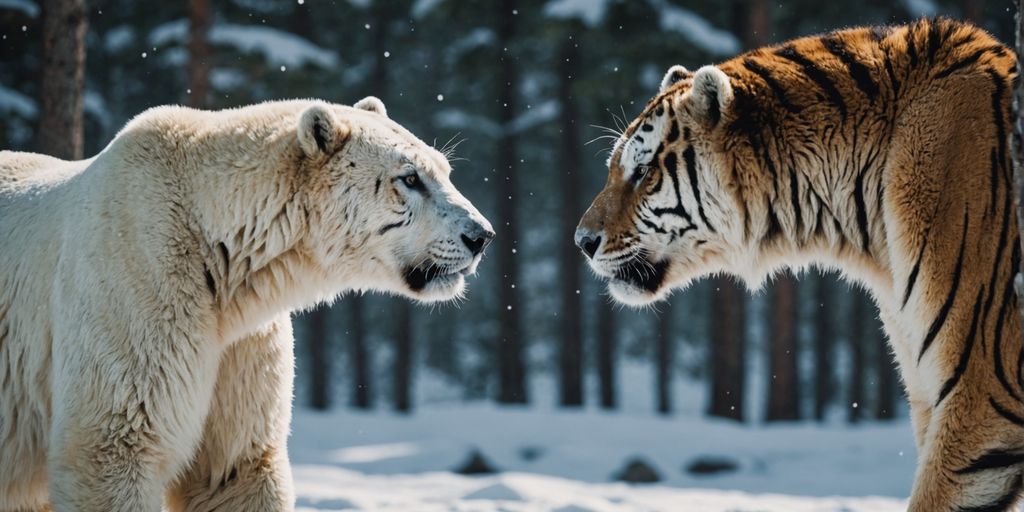Your Cart is Empty
🙏HELP US SAVE TIGERS!🐅 WE DONATE 1% OF OUR SALES TO WILDLIFE ORGANIZATIONS ( WWF ...)
Menu

🙏HELP US SAVE TIGERS!🐅 WE DONATE 1% OF OUR SALES TO WILDLIFE ORGANIZATIONS ( WWF ...)
Jaguar vs Leopard: Unveiling the Differences Between These Majestic Big Cats
June 26, 2024 6 min read

Physical Traits: Spotting the Differences
When it comes to spotting the differences between jaguars and leopards, their physical traits are a great place to start. These majestic big cats may look similar at first glance, but a closer inspection reveals some fascinating distinctions.
Habitats and Geographic Distribution
Where Jaguars Roam
Jaguars primarily inhabit various habitats in the South American region, including the Amazon rainforest, Northern Mexico, and regions such as French Guiana. They rely on dense vegetation and access to water as sources for their survival. Jaguars are comfortable in and around water and are noted swimmers, often seeking aquatic habitats to hunt fish and turtles.
Leopard Territories
Leopards make their homes in forests, savannas, and grasslands. They are exceptionally versatile, able to thrive in both arid and forested regions. Both wild cats prefer habitats with vegetation.
Environmental Adaptations
Jaguars prefer dense and tropical wet lowland forests with plenty of vegetation cover. You'll also find them in marshy lands of Central America. On the other hand, leopards are more adaptable to different ecosystems, from the rain forests of Indonesia to the foothills of the Nepali Himalayas. This adaptability allows them to survive in fragmented and degraded habitats, although habitat loss and fragmentation pose significant threats to their survival.
Behavior and Hunting Techniques

Hunting Styles
Jaguars are highly skilled predators and employ a variety of hunting techniques to secure their prey. They are renowned for their stealth and patience. When they spot a prey, they wait patiently until it comes within striking distance. Their coats make it easy to blend seamlessly in dense vegetation or along riverbanks, so in most cases, the prey won’t notice them until the moment they pounce. This flexibility in hunting style highlights the leopard's prowess as a solitary predator, capable of thriving in both open and covered terrains where the opportunity for a meal presents itself.
Dietary Preferences
Jaguars are known for their powerful bite force, capable of penetrating the skulls and shells of their prey, which includes reptiles like turtles and terrestrial mammals. Leopards, on the other hand, have a more varied diet and are known to adapt their hunting techniques based on the availability of prey in their environment.
Interaction with Other Predators
Both jaguars and leopards are solitary hunters and prefer to avoid direct confrontation with other predators. However, their interactions with other predators can vary based on their environment and the competition for food. Jaguars, for instance, are more likely to encounter other large predators in the dense jungles they inhabit, while leopards may face competition from other big cats and carnivores in their territories.
Reproduction and Lifespan

Mating Rituals
Jaguars and leopards have distinct mating rituals. Jaguars reach sexual maturity at around 2 to 3 years for females and 3 to 4 years for males. Leopards, on the other hand, develop slightly later, with most females falling pregnant for the first time at around 3.5 years.
Cub Rearing
The early life of these animals is a critical period where they learn the skills necessary to survive in the wild. Female leopards play a vital role in teaching their cubs to hunt, usually separating from them when they are about 18 to 24 months old. Jaguars, in the Pantanal at least, go independent at a very young age, with females leaving their mothers at around 14-15 months.
Longevity in the Wild
The variance in lifespan between these two big cats can be attributed to their differing environmental pressures, social structures, and survival strategies. Leopards typically live 12-15 years in the wild, although there are cases of females reaching over 17 years. Jaguars' life expectancy in the wild is uncertain but thought to be around 13-15 years.
Conservation Status and Threats
Current Population Trends
When it comes to the conservation status of these big cats, both the jaguar and the leopard are facing significant challenges. Jaguars are currently listed as near threatened on the IUCN Red List, while leopards are classified as vulnerable. This means that both species are at risk, but the jaguar's situation is slightly less dire than that of the leopard.
Major Threats
Jaguars and leopards face a variety of threats that have led to their declining populations. Some of the major threats include:
-
Habitat loss due to deforestation and human encroachment
-
Poaching for their beautiful coats and other body parts
-
Climate change, which affects their natural habitats
-
Illegal wildlife trade, which continues to be a significant issue
Conservation Efforts
Despite these challenges, there are numerous conservation efforts underway to protect these majestic big cats. Organizations like WWF, IUCN, WCS, and Panthera are actively involved in initiatives to safeguard their populations. These efforts include:
-
Anti-poaching measures to protect jaguars and leopards from illegal hunting
-
Habitat restoration projects to ensure they have a safe place to live
-
Community education programs to raise awareness about the importance of conservation
-
Legislation and policy advocacy to strengthen wildlife protection laws
The fact that jaguars are near threatened underscores the urgency of prioritizing conservation efforts to prevent further decline and potential extinction. With their population already relatively small and facing ongoing threats, it's crucial to take action now to safeguard jaguars and ensure their long-term survival.
Cultural Significance and Mythology
Jaguars in Indigenous Cultures
Jaguars were widely revered by early American civilizations, inspiring Olmec were-jaguar statues, Aztec “Jaguar Warriors,” several Maya jaguar gods, and the Moche culture of ancient Peru’s jaguar pottery. Their name comes from the Tupi-Guarani word “yaguara” meaning “the beast that kills its prey in a single bound.” Jaguars have an extremely powerful bite that allows them to pierce tortoise shells and mammal skulls, and are by far the best swimmers among the big cats, even hunting caimans in the water.
Leopards in Folklore
Unfolds amidst the vast wilderness, where the whispers of the wind blend with rustling leaves. Here, two enigmatic beings reign supreme: the black jaguar and the melanistic leopard, often referred to as a black panther. These mysterious creatures, cloaked in darkness, evoke wonder among wildlife enthusiasts. But fret not, for we embark on a quest to decode their secrets.
Modern-Day Symbolism
In nature’s tapestry, few threads captivate like the black jaguar and the melanistic leopard. Their nocturnal ballet, shrouded in intrigue, testifies to the wild’s wonders. As you traverse Taman Safari Bali or venture into untamed wilderness, keep vigil for these elusive shadows. Within darkness lies enchantment and discovery, where every creature holds an untold story.
Conclusion
In the end, while jaguars and leopards might seem similar at first glance, a closer look reveals a world of differences. From their unique coat patterns and body structures to their distinct behaviors and habitats, each of these majestic big cats has its own story to tell. Whether you're a wildlife enthusiast or just curious, understanding these differences not only deepens our appreciation for these incredible animals but also highlights the rich diversity of the natural world. So next time you spot a big cat, you'll know exactly what to look for!
Frequently Asked Questions
What are the main physical differences between jaguars and leopards?
Jaguars are bulkier with intricate rosettes, while leopards are lighter with simpler patterns. Jaguars also have blockier and larger heads compared to the leaner and more elongated heads of leopards.
Where can jaguars and leopards be found?
Jaguars are primarily found in the Americas, particularly in the Amazon Basin. Leopards have a wider distribution and can be found throughout Africa and parts of Eastern and Southern Asia.
How do the hunting techniques of jaguars and leopards differ?
Jaguars are known for their powerful bite and often kill prey by piercing the skull. Leopards, on the other hand, use a suffocating bite to the throat. Both are solitary hunters but have different strategies based on their environments.
What are the dietary preferences of jaguars and leopards?
Jaguars have a diverse diet that includes fish, reptiles, and mammals. Leopards also have a varied diet but are more likely to hunt smaller mammals and birds.
What are the major threats to jaguar and leopard populations?
Both species face threats from habitat loss, poaching, and human-wildlife conflict. Conservation efforts are in place to protect their dwindling populations.
How do jaguars and leopards feature in cultural significance and mythology?
Jaguars hold a significant place in indigenous cultures of the Americas, often symbolizing power and strength. Leopards appear in various African and Asian folklore, representing agility and cunning.
Also in Tiger Blog

Sloth Bear vs Tiger: Who Would Win?
July 13, 2024 7 min read
Explore the thrilling showdown between a sloth bear and a tiger, analyzing their strengths, behaviors, and survival tactics.
Read More
Tiger vs Elephant: Who Reigns Supreme in the Animal Kingdom?
July 13, 2024 7 min read
Explore why elephants usually triumph over tigers in the wild, highlighting their size, strength, and defensive prowess.
Read More
Epic Battle: Polar Bear vs Tiger, who win?
July 11, 2024 8 min read
Epic showdown: Polar Bear vs Tiger. Discover who would win in this thrilling battle of nature's fiercest predators.
Read More